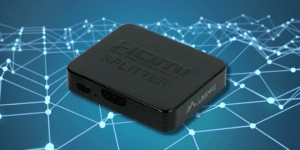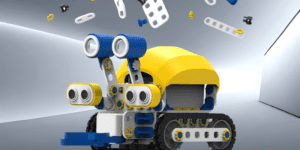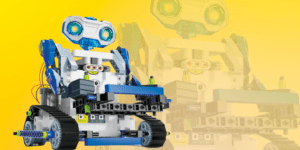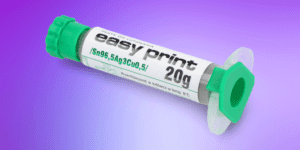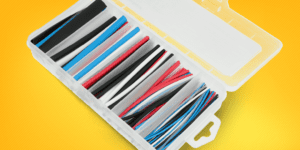Spis treści:
- 1 Robotics combines several fields of technology such as electronics, programming, automation and mechanics. A properly designed and built robot means not only the properly made electrical connections and an optimized program code for microcontroller.
- 2 Bolts and screws – basic assembly elements
- 3 Washers for bolts and spacers
- 4 Wheels and gears
- 5 Belt transmissions
Robotics combines several fields of technology such as electronics, programming, automation and mechanics. A properly designed and built robot means not only the properly made electrical connections and an optimized program code for microcontroller.
An equally important factor is the correct selection and assembly of mechanical elements, which determine the robot’s durability and stability. Screws, gears, drive belts and many complicated parts – those are the same functional components of a robot as a bone system is for humans and animals. Botland store and Botland blog are the places where you can find all of them.
Bolts and screws – basic assembly elements
Most of the rigid connections between the robot’s structural elements are made of bolts and screws. The easiest way to distinguish them is to pay attention to the thread shape – for the same thread size (e.g. M3) and the same thread length, the distance between the threads is greater in the case of screws, which is an equivalent to a more dense winding distribution of threads in the bolt with the same thread size per screw. The second visible feature that allows you to distinguish a screw from a bolt is the shape of the head – most often, screws have a cone-shaped head cap, while screws have a barrel-shaped socket head cap. When it comes to choosing bolts for the dimensions of the joined elements, pay attention to their geometrical dimensions in order to correctly select the bolt dimensions. Depending on the total thickness of the elements you want to connect to each other, you also need to choose the right length. The bolts also differ due to the shape of the socket in the head cap – the most common are screws with flat-, cross-, spanner-, hexagonal- and star- (torx-) heads.
Washers for bolts and spacers
When the robot is moving over the particularly uneven terrain, as well as moving in place, its structure is exposed to vibrations. This phenomenon can lead to self-loosening of the screw connections. To increase the stability of the bolted connections and reduce the risk of damage to the elements connected with screws during assembly, washers should be used. A washer should be placed under the bolt head, and if the element to be connected is not threaded, then a washer should also be placed between this element and the bolt nut. The application of the cover plate also has a positive effect on the appropriate distribution of the pressure force when tightening and protects the tightened element against damage, which is especially important for elements made of brittle materials with low elasticity. However, in order to mount PCBs with electronic components in the robot, you should additionally use elements that will ensure the stability of the board, especially if loose wires are soldered to it. To effectively immobilize the PCB, it is best to use spacer bars, which are most often cylindrical or cuboid with a hexagonal base. The height of the spacers should be selected according to the amount of free space for installation.

Wheels and gears
Gears are rotating components that work together through regularly spaced teeth to form a gear for transmitting torque. The use of gears allows you to change the rotational speed of the driven object, torque, and the direction of rotation – similarly to cars, also in more advanced robots, the most common example is the use of reverse gear, although in many designs it is enough to use an electric drive with a control circuit for switching the motor rotation direction. The efficiency of a gear transmission is determined by its operating parameters, i.e. torque and rotational speed. The torque shows the force applied to the arm of a certain length – for gears, the torque depends on the diameter of the wheels between which it is transmitted. The rotational speed of the set of gears determines the number of rotations performed in a given period of time by the output gear of the system.

When a wheel with a larger diameter drives a wheel with a smaller diameter, then for one revolution of the larger wheel, the smaller wheel will rotate the greater number of turns in the same time interval – such a solution is a gear that increases the speed. On the other hand, the smaller wheel that drives the larger wheel is a system that allows the reduction of rotational speed. The ratio of the sizes of the two cooperating wheels is linearly proportional to the speed and torque changes between them.
Belt transmissions
Belt transmissions are very common not only in automotive (timing belt for camshafts and devices such as alternators and water pumps), but are also used in model making and robotics. Belt transmissions with flat-surface belts fulfill their role particularly well in transmission systems with low torque and low mechanical load, making them a favorable alternative to standard gears. Another significant advantage of belt transmissions is greater flexibility, thanks to which the problem of vibrations that may be the cause of disturbances and construction damages has been eliminated.
How useful was this post?
Click on a star to rate it!
Average rating 0 / 5. Vote count: 0
No votes so far! Be the first to rate this post.



